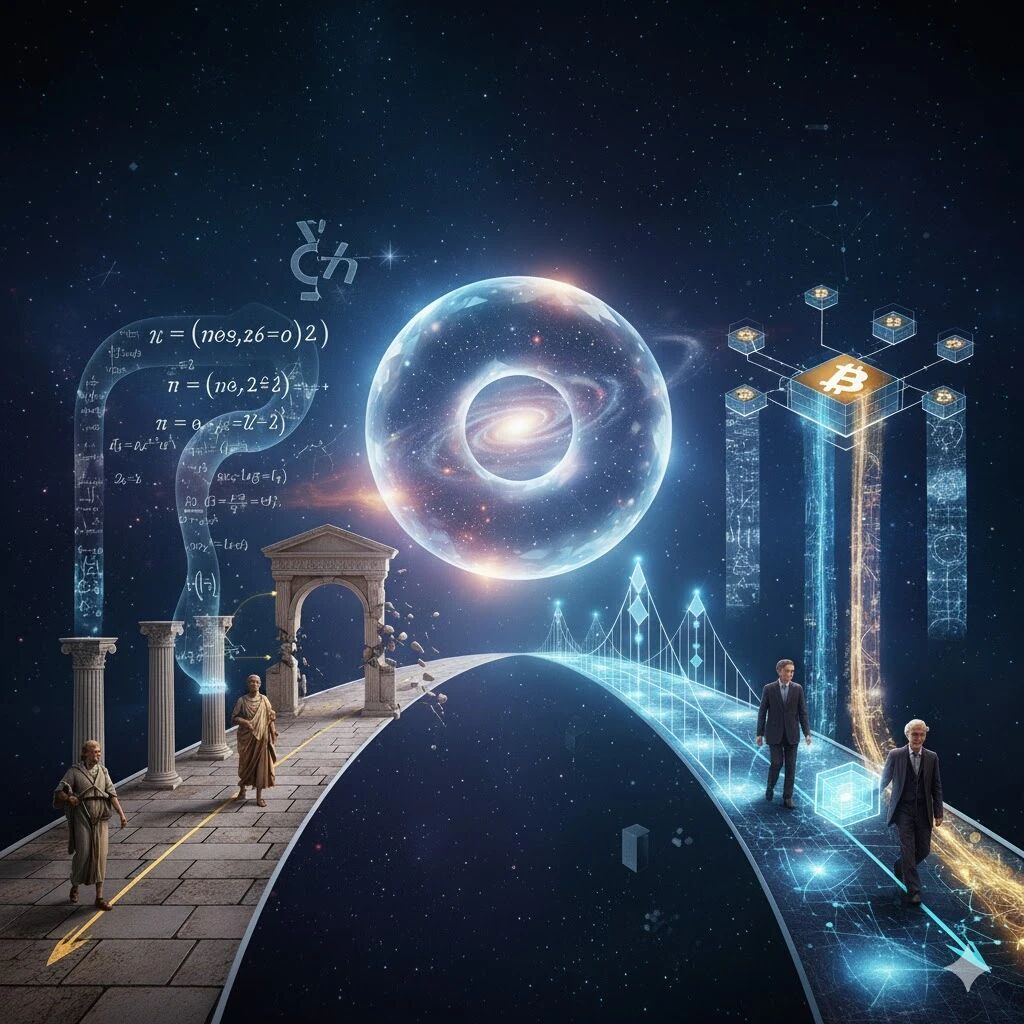
The problem of mathematical incompleteness is one of the most important discoveries in 20th-century logic and foundational mathematics. Gödel proved that any sufficiently strong formal system cannot achieve completeness within its own framework. This has been regarded as the “ceiling” of formal mathematics.
But is the problem truly unsolvable? European mathematicians, including von Neumann and the successors of the Hilbert school, proposed a profound conjecture:
The root of incompleteness arises from the structural defect produced when attempting to describe infinity using finite inductive methods.
In other words, when we use finite empirical rules or a single logical system to reason about the infinite, incompleteness is inevitable. But if we change the way we understand “infinity,” incompleteness is not the endpoint.
This article will demonstrate that through complementary and parallel inductive paths, incompleteness can be overcome or asymptotically approached.
This is the shared philosophical foundation underlying Nash’s layered introspective logic, Wiles’s proof of Fermat’s Last Theorem, and Bitcoin’s realization of logically complete consensus.
Mathematicians have long relied on induction to study mathematical structures.
The limitations of induction are:
European mathematicians believed that incompleteness is not an accident of logic, but a structural insufficiency caused by “using finite methods to describe the infinite.”
Mathematicians made several attempts to grasp infinity:

Weierstrass’s limit method solved the infinitesimal problem (the foundation of calculus).
Cantor tried to use a limit-approximation approach to handle infinity, but encountered the continuum hypothesis and countability paradoxes, revealing a deep issue:
Using the same logical method to describe two kinds of infinity (large and small) fails. Logic itself must be expanded.
We propose an important conjecture:
To characterize potential infinity, one must use two or more complementary formal systems for dual induction.
Here’s an analogy:
Two people on an island count sheep.
One counts by color,
the other by horn shape.
Their classification methods differ, but their goal is the same.
If both counts match, the result is far more certain.
This leads to a key principle:
✅ A single formal system → incompleteness
✅ Two equivalent but distinct mapping formal systems → approximation to completeness
This is the philosophy of complementary parallelism.
The core idea in Wiles’s proof of Fermat’s Last Theorem follows precisely this principle:

They seem completely different, but the Taniyama–Shimura Conjecture proved that the two are equivalent.
Thus, Wiles established a strong connection:
If a mathematical object can be consistently described by two entirely different formal systems, its logical completeness is elevated.
This is the triumph of the complementary parallel scientific method.
When Nash studied the structure of game theory, he proposed a layered model of introspective logic — the same idea:
A single rationality ≠ true rationality.
Only by introducing “levels of cognition about the opponent’s strategy” to form complementary reasoning can the system stably converge.
The essence of Bitcoin is not a payment system, but a logical breakthrough:

They are completely different, yet share the same goal —
To jointly determine the uniqueness and completeness of a global time chain.
This marks the first successful engineering realization of the complementary parallel philosophy.

True completeness does not arise from any single system, but from the coupling of equivalent yet complementary structures. This is the core direction for the future of science, logic, and computational systems.